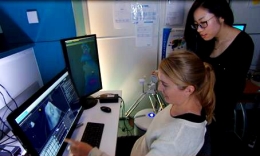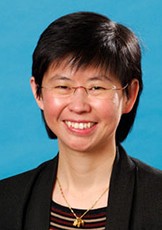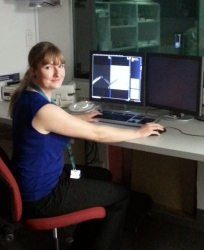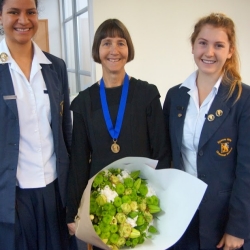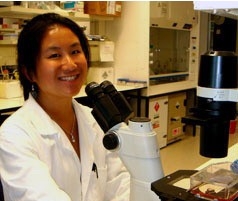Dynamically scaled-up model flow for coronary disease research
“Dynamically scaled-up coronary models may revolutionise coronary artery disease research” says main researcher and doctoral student Susann Beier.
Every 90 minutes a New Zealander dies from heart disease. Many of these deaths are premature and preventable. The vessels most susceptible to disease are the vessels surrounding the heart, the coronary arteries.
“The functionality of the coronaries is very important as they supply oxygen and nutrients rich blood to the heart. The heart muscle is magnificent; it allows the heart to beat continuously for more than 2 ½ billion times in a patient’s life time. But without such sufficient blood supply, the patient may experience shortness of breath or chest pain, and possibly even have a heart attack or dies as a consequence.” Susann says.
One way of diagnosing and understanding artery disease is to analyse the blood flow in vessel. Slow or rapidly changing blood flow creates the biological environment for plaque to accumulate, and with plaque accumulation the disease grows. Researchers around the world analyse blood flow in most parts of the blood flow system, helping to better diagnose artery disease and improve patient treatment.
“Even though the coronary arteries are most likely to accumulate plaque, their blood flow cannot be assessed without risks today. Being very small calibre vessels, which move constantly with the beating heart, no medical imaging technology can measure their flow non-invasively, accurately and without risk today.“ she explains.
So, Susann Beier and the successful team of New Zealand researches, including the Cardiologist Prof. John Ormiston and A. Prof Mark Webster, the Engineers Dr. John Cater, Dr. Stuart Norris, and Prof. Alistair Young and the medical doctor A. Prof. Brett Cowan, found a way to experimentally test coronary blood flow.
“We can use precise 3D printing to reproduce accurate, patient-specific models of coronary arteries with one major difference: they are scaled-up by a factor of 10.” Susann continues.
These models can be incorporated to a flow circuit which replicates the coronary blood flow in that patient’s coronary. Advanced 4D phase contrast magnetic resonance imaging is used to measure the replicated coronary blood flow.
“It is quite exciting that we were able to proof that the replicated flow in these large 3D printed coronaries is just identical to the real patient blood flow. This is possible due to a physics principal called ‘dynamic similarity’, where the flow in small and large scale domains is the same if certain experimental conditions are preserved.” Susann says.
“We now want to work on using this technique to improve computer simulations of coronary blood flow. That will allow us to generate more accurate predictions and help to test normal, disease or treated coronaries more easily.”
An interview with Susann about her research will air during the ‘Our Changing World’ programme on Thursday the 9th of July, 2015 from 9pm on Radio NZ. The audio is available for download at:
http://www.radionz.co.nz/national/programmes/ourchangingworld.
The team likes to acknowledge the Centre for Advances MRI, the national super-computing facility NeSI, Technical Services at the Engineering and Medical Faculty at the University of Auckland.
Contact details
Susann Beier, PhD Candidate: s.beier@auckland.ac.nz
University of Auckland, Biomedical Sciences

